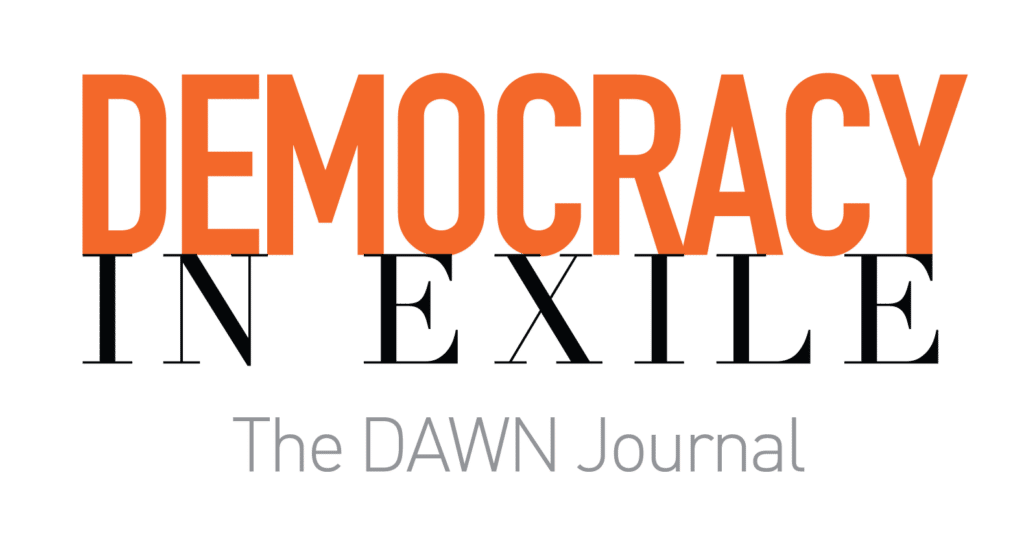Yara M. Asi is a non-resident fellow at DAWN and the author of How War Kills: The Overlooked Threats to Our Health. She is an assistant professor at the University of Central Florida in the School of Global Health Management and Informatics, and a visiting scholar at the FXB Center for Health and Human Rights at Harvard University, where she is co-director of the Palestine Program for Health and Human Rights.
Years after the American-led invasion in Iraq, where it was known that hundreds of thousands of Iraqis were killed by coalition airstrikes, military raids and other violence, researchers attempted to more accurately measure the deadly consequences of war and occupation. One comprehensive analysis estimated approximately 3.6 million to 3.8 million indirect deaths across Iraq and the wider region as a result of the U.S. "war on terror" following 9/11, primarily attributed to four causes: malnutrition, disease, injury and maternal and newborn mortality. Displacement, a common factor in settings of war and especially acute in Iraq, where millions were made refugees during the disastrous U.S. occupation, further compounds people's vulnerability to these causes.
In any active war zone, battle-related deaths are among the most commonly reported in the media and are easily recognized as directly related to armed conflict. They make for compelling pictures, videos and testimonies for both humanitarian agencies and global media outlets. Yet analysis of armed conflicts over history show that these deaths are just a fraction of the overall death toll in war. When assessing conflicts after 1990, it is estimated that indirect deaths account for three to 15 times the amount of deaths from battle-related causes.
And so it was no surprise when, in early July, nine months after the beginning of what is increasingly considered to be genocide, researchers published a short study in the prestigious British medical journal The Lancet on the staggering total death toll in Gaza. Rasha Khatib, Martin McKee and Salim Yusuf estimate that if the reported count of around 38,000 dead is accurate, then it is highly likely the eventual death toll, when "applying a conservative estimate of four indirect deaths per one direct death," could be closer to 186,000 people. From a population of around 2.3 million, this would account to almost 8 percent of Gaza's entire population.
Malnourished, traumatized populations, crowding together in inadequately resourced shelters with little access to even the most basic health care, are at extremely high risk for death or disability that otherwise would be entirely preventable.
- Yara M. Asi
While recognizing that this estimate is solely predictive at this stage, the authors accounted for several dynamics in their analysis, including the aforementioned factors that contribute to deaths due to indirect causes. Malnutrition is exceptionally high in Gaza, with famine reported across the besieged territory. The spread of disease is rampant, with reports of skin diseases, respiratory ailments and, most recently, worrying reports of polio found in wastewater, which means it is present in the population. The rate of injury is incredibly high, including traumatic injuries from blasts that should receive immediate comprehensive medical care and instead receive almost none, due to Gaza's decimated health care system. Lastly, maternal and infant mortality have skyrocketed, including a high rate of stillbirths. Most babies that are born in Gaza are dangerously underweight, and their mothers are often too malnourished and stressed to nurse them.
At the same time, displacement in Gaza is unprecedented, with around 90 percent of Gaza's population displaced, some more than ten times in barely nine months. Many Palestinians in Gaza have no homes to return to whenever a cease-fire is finally reached. Malnourished, traumatized populations, crowding together in inadequately resourced shelters with little access to even the most basic health care, are at extremely high risk for death or disability that otherwise would be entirely preventable. But they are also among the hardest to reach when attempting to get accurate data about a suffering population.
Estimates are further complicated by the inability of Gaza's Ministry of Health to collect any data from many parts of the territory due to the destruction of infrastructure and the death of so many health workers because of Israeli bombardment. Many Palestinians are likely dying at home or alone, their deaths unreported. At least a third of bodies that have been found across Gaza are still unidentified. And it remains a complete unknown how many bodies are left under the rubble, with estimates of at least 10,000.
However, the limitations of on-the-ground data makes the kind of model published in The Lancet even more meaningful, even though retrospective research done in the future will be more accurate. Since Israel has allowed very few international journalists to enter Gaza since Oct. 7, and the few humanitarian workers that Israel permits to enter must adhere to strict rules about movement, there is almost no way to corroborate Gaza's current death toll. The figures collected by local actors are not only incomplete, but they are not deemed credible by the same entities that are perpetrating and enabling the violence against them—specifically, the American and Israeli governments.
Trying to discredit The Lancet is in line with bogus questions about whether Gaza's Ministry of Health can be trusted at all—empty claims that have no evidentiary basis.
- Yara M. Asi
Many critics have argued that these are purposeful attempts by Israel and its allies to downplay the consequences of Israel's so-called war on Hamas. Casting doubt on the number of dead in Gaza obscures a reality where the Palestinian civilian death toll is much higher than Israel claims, the infrastructure damage belies any effort to pretend they were legitimate military targets, and Israeli politicians openly celebrate the possibility of seizing the lands of Gaza for Israeli settlers.
Estimates published by credible outlets like The Lancet offer an opportunity to get a real sense of what is happening in Gaza on the population-level, beyond the horrific stories shared by locals on social media and the testimonies of aid workers that the conditions are among the worst they have ever seen in any conflict, anywhere.
Of course, as is unfortunately the case with many efforts to humanize Palestinians or to address the reality of Israel's treatment of them, The Lancet study was met with silence from many global news outlets, and outright skepticism from others. All too familiar criticisms included the very idea of modeling deaths altogether, despite the multiple caveats presented by the study's authors, as well as the lack of distinction between civilian and combatant deaths. At the same time, the overwhelming toll of this war on civilians in Gaza is obvious for anyone to see.
Trying to discredit The Lancet is in line with bogus questions about whether Gaza's Ministry of Health can be trusted at all—empty claims that have no evidentiary basis. After all, the ministry's figures were used and verified in all previous wars in Gaza, even closely matching Israel's own estimates. Rather than continue to defend Israel's increasingly indefensible actions, these questions are an attempt, once again, to deflect from the reality that Israel is not simply defending itself but killing tens of thousands of Palestinians and making explicit claims to destroy or seize their lands.





































